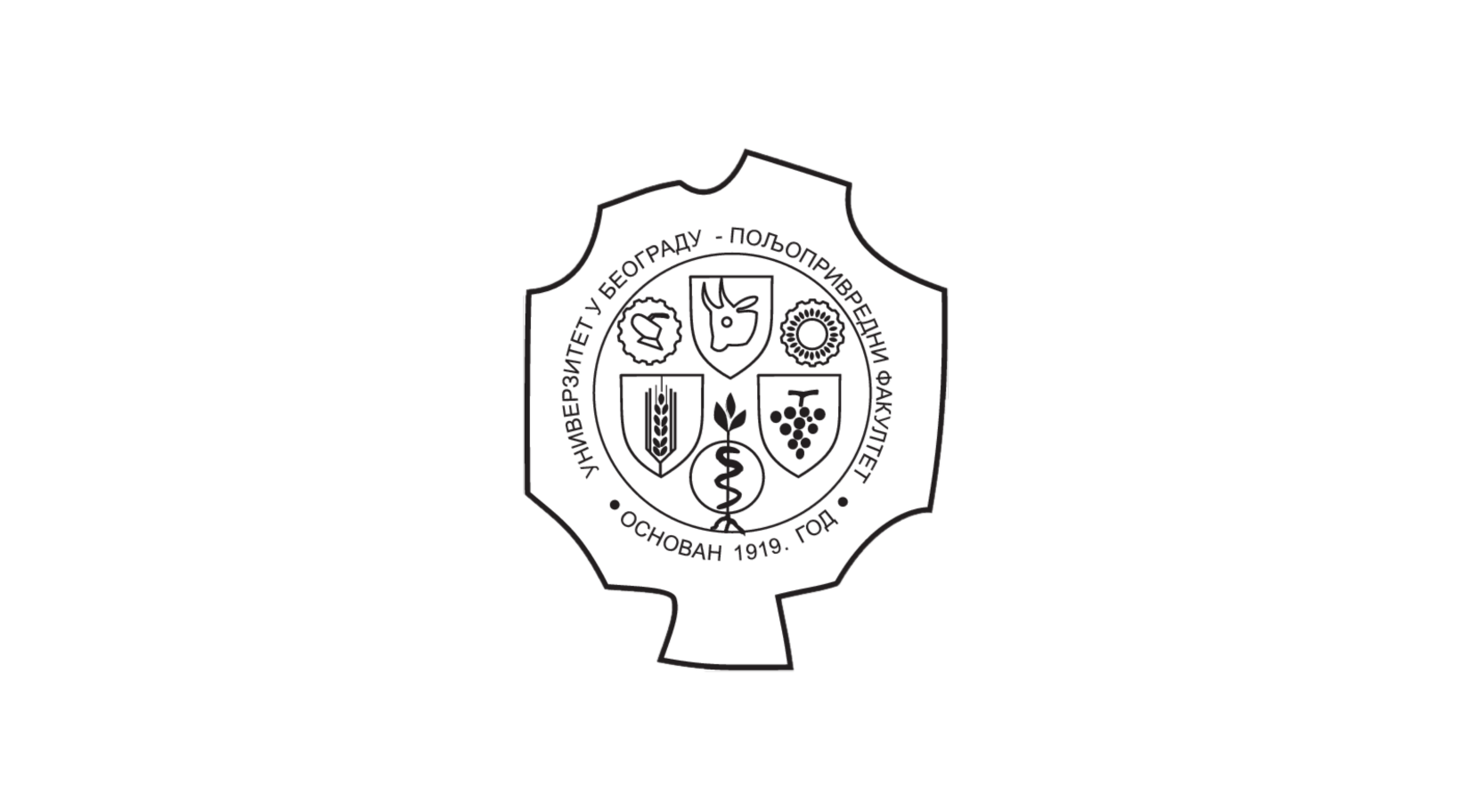Biological treatment of animal feeds
Апстракт
Biological treatment of feeds includes its exposure to the influence of exogenous enzymes in digestive tract of animals, i.e. exposure to the process of fermentation under the influence of microorganisms (pre-digestion) in fementors. Basic reason for adding endogenous enzymes into animal diets is the activity of already existing unused nutrients into outer space. The technology of pre digestion of food includes exposure of food to the process of action of added enzymes in fementors which enable undisturbed and successful fermentation. Microorganisms isolated from rumen of ruminants dissolve cellulose, hemicellulose, lignin and other difficultly digestible polysaccharides using their own enzymes, and the products of dissolution (simple sugars) are used for the synthesis of microbial protein of high biological value. They use nitrate and nitrite nitrogen from food and from the air. They synthesize vitamins of B complex, D, E, and K vitamins and they also dissolve mycotoxines, making the ...food contaminated with mycotoxines less harmful. Through the process of fermentation of feeds, under the influence of microorganisms of rumen ("Biofermix" preparation) examined in Russian scientific research institutes, in cases of certain animal feeds (e.g. wheat bran), the increase in the protein content was determined from 13 to 25%, as well as reduced content of cellulose from 8 to 2%, which contributes to the greater utilization of such feed, to the better production reproductive and health performances of animals and to the protection of the environment as well. In order to gain new experience and to obtain additional arguments on efficacy of utilization of microorganisms in the process of biological treatment of animal feed it is necessary to perform research work with raw materials which is used under our conditions.
Кључне речи:
Animal feed / Enzymes / Fermentation / MicroorganismsИзвор:
CEFood 2012 - Proceedings of 6th Central European Congress on Food, 2012, 1583-1589Издавач:
- 6th Central European Congress on Food, CEFood 2012
Scopus: 2-s2.0-84961379907
Институција/група
Poljoprivredni fakultet
TY - CONF
AU - Adamović, M.J.
AU - Grubić, Goran
AU - Šefer, Dragan
AU - Lević, J.D.
AU - Bošković, D.T.
PY - 2012
UR - http://aspace.agrif.bg.ac.rs/handle/123456789/2756
AB - Biological treatment of feeds includes its exposure to the influence of exogenous enzymes in digestive tract of animals, i.e. exposure to the process of fermentation under the influence of microorganisms (pre-digestion) in fementors. Basic reason for adding endogenous enzymes into animal diets is the activity of already existing unused nutrients into outer space. The technology of pre digestion of food includes exposure of food to the process of action of added enzymes in fementors which enable undisturbed and successful fermentation. Microorganisms isolated from rumen of ruminants dissolve cellulose, hemicellulose, lignin and other difficultly digestible polysaccharides using their own enzymes, and the products of dissolution (simple sugars) are used for the synthesis of microbial protein of high biological value. They use nitrate and nitrite nitrogen from food and from the air. They synthesize vitamins of B complex, D, E, and K vitamins and they also dissolve mycotoxines, making the food contaminated with mycotoxines less harmful. Through the process of fermentation of feeds, under the influence of microorganisms of rumen ("Biofermix" preparation) examined in Russian scientific research institutes, in cases of certain animal feeds (e.g. wheat bran), the increase in the protein content was determined from 13 to 25%, as well as reduced content of cellulose from 8 to 2%, which contributes to the greater utilization of such feed, to the better production reproductive and health performances of animals and to the protection of the environment as well. In order to gain new experience and to obtain additional arguments on efficacy of utilization of microorganisms in the process of biological treatment of animal feed it is necessary to perform research work with raw materials which is used under our conditions.
PB - 6th Central European Congress on Food, CEFood 2012
C3 - CEFood 2012 - Proceedings of 6th Central European Congress on Food
T1 - Biological treatment of animal feeds
EP - 1589
SP - 1583
UR - https://hdl.handle.net/21.15107/rcub_agrospace_2756
ER -
@conference{
author = "Adamović, M.J. and Grubić, Goran and Šefer, Dragan and Lević, J.D. and Bošković, D.T.",
year = "2012",
abstract = "Biological treatment of feeds includes its exposure to the influence of exogenous enzymes in digestive tract of animals, i.e. exposure to the process of fermentation under the influence of microorganisms (pre-digestion) in fementors. Basic reason for adding endogenous enzymes into animal diets is the activity of already existing unused nutrients into outer space. The technology of pre digestion of food includes exposure of food to the process of action of added enzymes in fementors which enable undisturbed and successful fermentation. Microorganisms isolated from rumen of ruminants dissolve cellulose, hemicellulose, lignin and other difficultly digestible polysaccharides using their own enzymes, and the products of dissolution (simple sugars) are used for the synthesis of microbial protein of high biological value. They use nitrate and nitrite nitrogen from food and from the air. They synthesize vitamins of B complex, D, E, and K vitamins and they also dissolve mycotoxines, making the food contaminated with mycotoxines less harmful. Through the process of fermentation of feeds, under the influence of microorganisms of rumen ("Biofermix" preparation) examined in Russian scientific research institutes, in cases of certain animal feeds (e.g. wheat bran), the increase in the protein content was determined from 13 to 25%, as well as reduced content of cellulose from 8 to 2%, which contributes to the greater utilization of such feed, to the better production reproductive and health performances of animals and to the protection of the environment as well. In order to gain new experience and to obtain additional arguments on efficacy of utilization of microorganisms in the process of biological treatment of animal feed it is necessary to perform research work with raw materials which is used under our conditions.",
publisher = "6th Central European Congress on Food, CEFood 2012",
journal = "CEFood 2012 - Proceedings of 6th Central European Congress on Food",
title = "Biological treatment of animal feeds",
pages = "1589-1583",
url = "https://hdl.handle.net/21.15107/rcub_agrospace_2756"
}
Adamović, M.J., Grubić, G., Šefer, D., Lević, J.D.,& Bošković, D.T.. (2012). Biological treatment of animal feeds. in CEFood 2012 - Proceedings of 6th Central European Congress on Food 6th Central European Congress on Food, CEFood 2012., 1583-1589. https://hdl.handle.net/21.15107/rcub_agrospace_2756
Adamović M, Grubić G, Šefer D, Lević J, Bošković D. Biological treatment of animal feeds. in CEFood 2012 - Proceedings of 6th Central European Congress on Food. 2012;:1583-1589. https://hdl.handle.net/21.15107/rcub_agrospace_2756 .
Adamović, M.J., Grubić, Goran, Šefer, Dragan, Lević, J.D., Bošković, D.T., "Biological treatment of animal feeds" in CEFood 2012 - Proceedings of 6th Central European Congress on Food (2012):1583-1589, https://hdl.handle.net/21.15107/rcub_agrospace_2756 .



